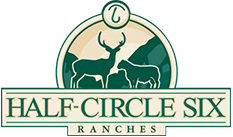Frequently Asked Questions
This is a very tricky question because there are numerous differences in bloodlines in each of these breeds. A generality that one breeder "knows" to be true may be based on a limited amount of experience with other bloodlines. Each breeder needs to decide on which breed they like best.
Here are some generally known differences in Dorpers and White Dorpers:
- Dorpers have the advantage of excellent pigment that protects them from the sun.
- In ET programs Dorpers flush far more embryos. They are proven to be more fertile.
Additionally Dorpers are far superior to White Dorpers in spring breeding for fall lambs. - Generally White Dorpers can have slightly better overall conformation and shedding ability. This is certainly not always the case but it can be true in some lines.
The bottom line is that each breeder can be very successful with either breed.
There are major fundamental differences in Dorper Sheep and any other type or class of livestock. Dorpers were bred out of necessity in South Africa during the 1930's. They needed a sheep that would yield a good carcass and thrive in the harsh African conditions. Dorpers are nonselective grazers which means they are not particular about what they eat and this help them stay in good body condition throughout the seasons. Dorpers are nonseasonal breeders which means they will breed any month of the year. Dorpers have an even subcutaneous layer of fat that keeps them warm in the winter and able to withstand drought conditions. There is no animal wild or domestic that shares these qualities with the Dorper Sheep. These qualities along with others too numerous to mention make the Dorper profitable and that is the main answer to your question "Why should I breed Dorper Sheep?".
There is no answer to this question because it depends on your rainfall, forage type, and grazing management system. The best thing to do is consult with other producers in your area who raise sheep or goats. Remember livestock need to be rotated from pasture to pasture in order to remain healthy.
Firstly you need to determine your forage situation and the body condition of your sheep. Then you can try to match a feeding program to fit your operation. Remember Dorpers will eat about anything and can thrive on poor forage most of the time. Usually some quality hay and a pelleted feed will bring up the body condition of your sheep quite easily.
Dorpers are not the escape artists that goats are. Dorpers are usually content with where they are but if they run short on forage and bad fences are the norm on your farm don't expect a Dorper to stay and starve! They are smart animals. I recommend and personally build 6" stay net wire fences near 5' tall.
Here are my specs for new fencing: 13-48-6 High Tensile Net Wire, 6.5' 1.33lb T-Post driven 18"-24" deep every 25', Cemented Pipe post every 100' (treated with OSPHO and painted with enamel paint), 1 barb wire just above the net and another barb wire minimum 8" above that one (so deer don't get caught jumping the fence). Brace posts and line posts can be either wood or pipe-we use pipe in Texas. Braces must be 4-5' deep and well constructed to last. My pipe braces will be an H Brace with 45 degree kicker brace all 10' apart and welded together.
Electric Fencing works well for interior fences but will not keep predators out. Main consideration is proper grounding and use 12.5 gauge high tensile wire with good quality insulators.
The great thing about Dorpers is that they lamb easily and don't normally need assistance. Inclement weather especially extremely cold and wet are a concern. Ideally the sheep would have a shelter or barn to get into during bad weather. Problems may occur if a large number of ewes are penned in tight quarters and start lambing. This is not a normal situation for a sheep and mismothering may occur. This is where you would need individual pens called "jugs" to put ewe and lamb in for a short time. Sheep kept indoors create some health problems so keep them outside as much as possible.
AI and ET are both highly complicated procedures and are performed by a vet most of the time. Sheep are not blessed with a cervix that is easy to penetrate like other animals have so transcervical AI is difficult. Laprascopic AI is most often performed on sheep in order to have a high success rate. Two incisions are made on the belly of a sedated ewe and semen inserted directly into the uterus. Obviously it is somewhat of an invasive procedure so not many people use AI in sheep. ET is similarly performed with a Laprascopic procedure. Super ovulating drugs are given to the donor ewes and both donor and recipient are hormonally synchronized. It is about a three week program and results vary and are dependent on many factors.
